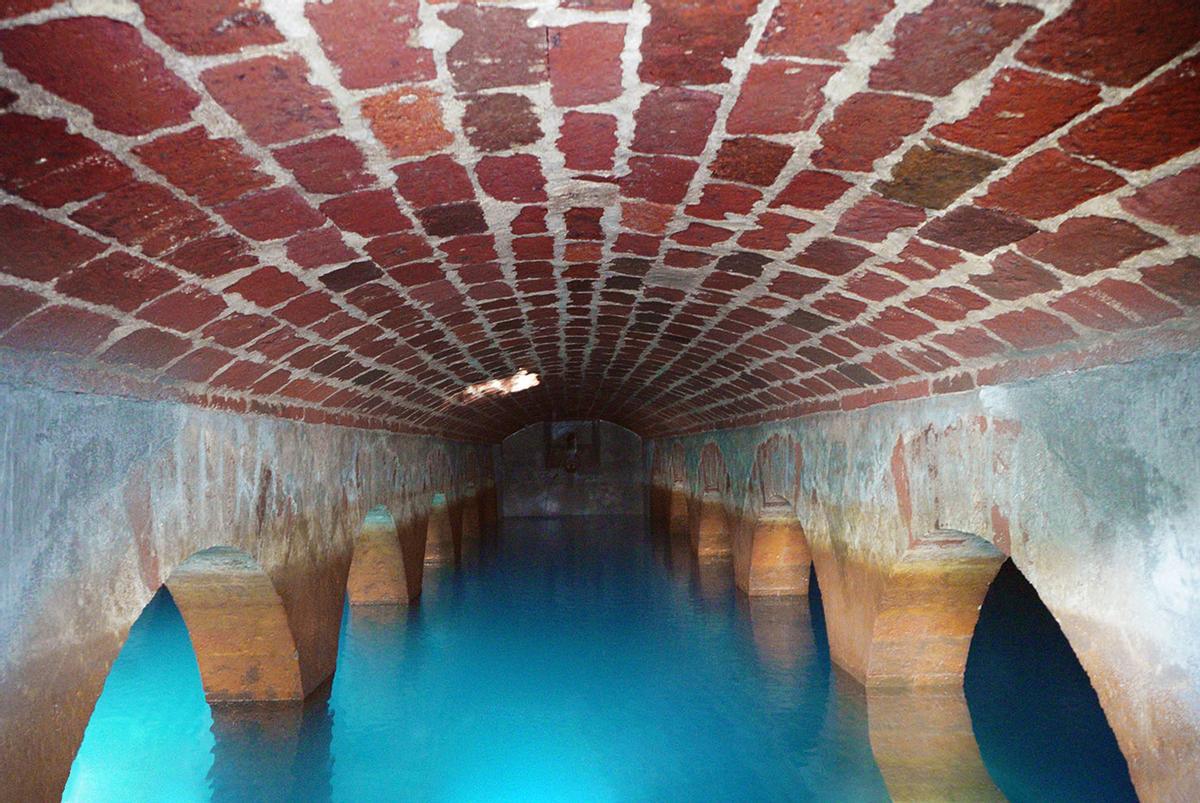Due to the rapid population increase observed in Santa Cruz at the dawn of the 20th century, which resulted in challenges concerning the water supply at public fountains and streams, the City Council deemed it necessary to construct a reservoir that would serve as a reserve and regulate distribution.
By 1970, when the General Water Supply Plan was established, there were already 38 tanks in Santa Cruz dedicated to the storage of potable water, boasting a capacity of 204,000 cubic meters, sourced from galleries and wells.
Currently, 70% of the water consumed comes from municipal resources, including galleries, wells, and the desalination plant, while the remaining 30% is derived from private suppliers’ wells and galleries scattered around various locations on the Island.
From these tanks, water is distributed across a network of 1,000 km, catering to over 207,000 residents who require 15 million cubic meters of water annually.
The Municipal Water Company (EMMASA), established in 1943, oversees the management of the Comprehensive Water Cycle, from its natural collection until it is delivered as drinkable in our homes.
Salamanca Depot

Interior of the Salamanca Depot /ED
The first water tank created to supply public fountains and jets in Santa Cruz de Tenerife commenced construction in 1899. It is located on land adjacent to the road to the Manicomio, now known as Febles Campos street, in the Salamanca neighbourhood. This project was designed by architect Antonio Pintor Ocete, covering an area of 1,107 square meters, with an interior height of 8.35 meters. The reservoir received its water supply via 8,000 pipes daily from the springs of Roque Negro and Catalanes, and the architect also constructed a 1,107-meter tunnel that traversed the summit from north to south.
By 1916, the first pressurised water supply distribution network for the entire population was established from this tank. As the installation progressed, residents began to connect to the network.
The tank, designed in the shape of a truncated pyramid, features perimeter walls constructed from basalt stone, using hydraulic lime concrete masonry. The vaulted roof, adorned with red edges, is supported by semicircular stone arches. The exterior roof is covered with a layer of picon that regulates the surface and insulates water from high temperatures. Its overall storage capacity is 5,500 cubic meters, divided into two vessels separated by a vertical wall.
This facility is classified with partial protection of its facades in the General Planning Plan; however, its architectural significance lies within, where the pillars, arches, and vaults are constructed in a classical manner akin to those of Arab cisterns.
To cater to the Salamanca Chica neighbourhood and the Asilo de los Desamparados located at a higher altitude, a secondary reservoir was built in 1917 to distribute 4,000 cubic meters of water daily to the populace.
Bullring Deposit
As some districts in Santa Cruz remained without pressurised water in 1922, and residents clamoured for this vital resource in their homes, the City Council was compelled to construct a second tank in the city.
To facilitate this, it acquired 1,946 square meters from the La Tinerfeña Society, which owned the Bullring, commissioning Municipal architect Antonio Pintor y Ocete to design a new water tank with a capacity of 6,000 cubic meters to service the area situated below its level. Water would be sourced from the Roque Negro-Catalanes canal, via the Salamanca reservoir.
The tank, constructed in 1924 and shaped like a truncated pyramid, employed reinforced concrete for the structure that supports both the vertical and horizontal thrusts. The roof comprises a concrete slab supported by beams, topped with coloured compressed cement tiles that form a perimeter border and shield the water from solar effects. Adjacent to it is a service building.
The interior of this warehousing space, measuring 1,123 square meters and standing 8 m tall, is divided into two vessels separated by a vertical wall made from reinforced concrete. It currently distributes 4,000 cubic meters of water to the local population each day.
This exemplary instance of industrial architecture, in an eclectic style, was inaugurated on 25 July 1928, and was designated an Asset of Cultural Interest (BIC) in 2013, classified as a Historical Complex.
Las Mesetas Deposit
Situated on a vast esplanade on the Pico de la Meseta, at the summit of the Ancheta ravine, accessible via the Lavaderos neighbourhood.
Constructed at the close of the 19th century, it has recently been reactivated to now store 6,000 cubic meters of water.
Smoke Tank
This tank, found on the slopes of the Leña ravine, receives 17,600 cubic meters of water daily from the desalination plant near the fishing dock, redistributing it to the Salamanca, Plaza de Toros, and Las Mesetas tanks, as well as to the Port Authority tank located beside it.
Subscribe to continue reading
















